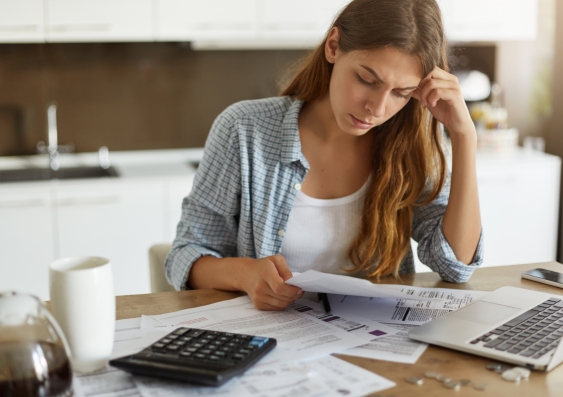New report highlights depth of poverty for people on income support
A new report highlights who is most at risk of poverty in Australia, showing that payments and supplements don’t go far enough.
A new report highlights who is most at risk of poverty in Australia, showing that payments and supplements don’t go far enough.

People who are unemployed or receiving income support, renters, sole parents, women, children and people with disability are at highest risk of poverty, while those on Youth Allowance experience deepest poverty, according to Poverty in Australia 2023: Who is affected, released today by the Poverty and Inequality Partnership between UNSW Sydney and the Australian Council of Social Service (ACOSS).
By payment type, 60 per cent of people receiving JobSeeker payment and 72 per cent of people receiving Parenting Payment live in poverty, compared with one in eight (13 per cent) people and one in six children (17 per cent) in poverty overall, based on the latest available data from the Australian Bureau of Statistics.
This highlights the failure of relevant payments and supplements to meet essential costs, including the real costs of raising children as a single parent, the report authors say.
The report shows the depth of poverty experienced by people on income support payments is severe: people in households relying on Youth Allowance are in the deepest poverty, with incomes on average $390 per week below the poverty line. People in households relying on JobSeeker were $269 per week below the poverty line, and people in households relying on parenting payment were $246 per week below the poverty line.
Professor Carla Treloar from UNSW’s Social Policy Research Centre said this research revealed the profile of poverty in Australia and the role that policy settings – particularly payment rates – play in determining poverty.
“The depth of poverty experienced by young people on Youth Allowance is unacceptable. Young people who are trying to start their working life are being left behind. And we see every day on campus the impact that this has on students who are struggling to pay for essentials while trying to complete their degrees,” she said.
The experience of poverty is also highly gendered. Households whose main income-earners were women experienced almost twice the level of poverty in 2019-20 as those whose main income-earner was a man (18 per cent compared with 10 per cent).
Housing status is a major poverty risk, with one in five people (20 per cent) renting privately and half (52 per cent) of people in public housing living below the poverty line, compared with 10 per cent of mortgage holders and eight per cent of home-owners without a mortgage.
Sole parent families, women and people with a disability are all experiencing poverty at above average levels.
ACOSS CEO Cassandra Goldie said the report provided compelling evidence about the profile of poverty in Australia, who is at greatest risk and how we can end poverty for all.
“The fact that a majority of people relying on unemployment payments and parenting payments are in poverty shows that assistance to people who are unemployed or raising children alone is totally inadequate to meet the essentials of life.
“The depth of poverty experienced by young people relying on Youth Allowance also highlights the need for urgent action to lift allowances for young people.
“This report provides further evidence of the need for a poverty reduction package in the May Budget to lift working-age income support payments to at least $76 a day, double rent assistance, increase supplements for the extra costs of sole parenthood and disability, complemented by a commitment to full employment and improved employment services.”
The following lived below the poverty line in 2019-20:
Households mainly reliant on income support payments had average weekly incomes well below the poverty line:
The report used the latest available data from the 2019-20 Australian Bureau of Statistics Survey of Income and Housing.
The poverty line is defined as 50 per cent of median household income, taking account of people’s housing costs.
Households mainly reliant on income support payments (‘income support households’) are households in which over 50 per cent of gross income is government cash benefits and those benefits are at least $180 per week.